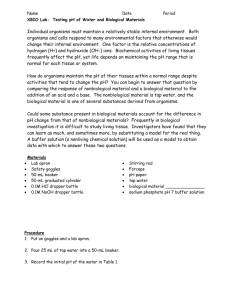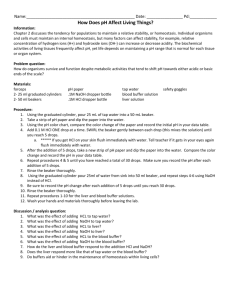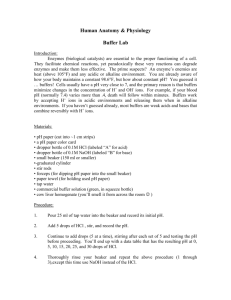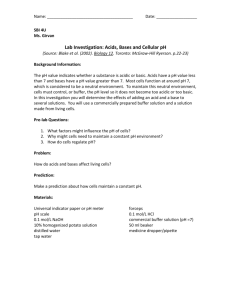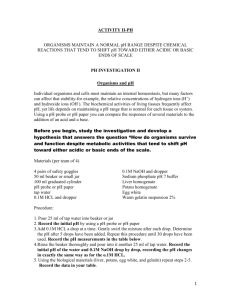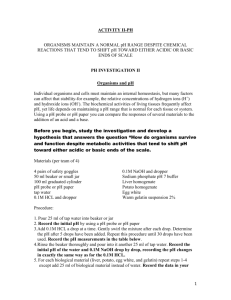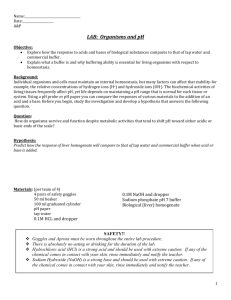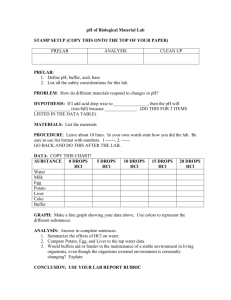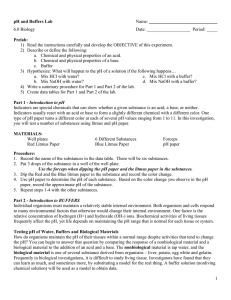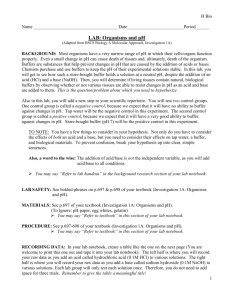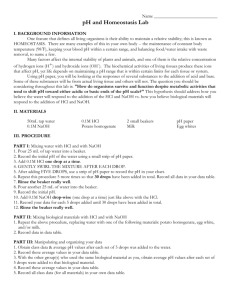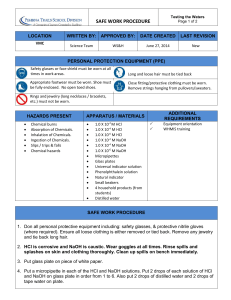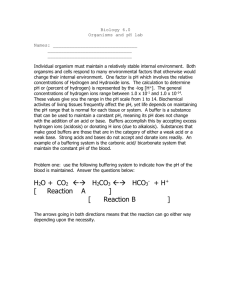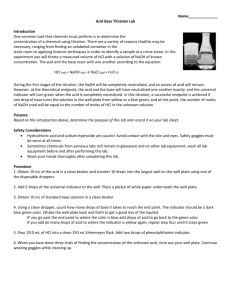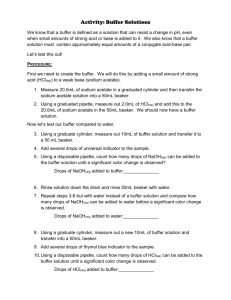File
advertisement
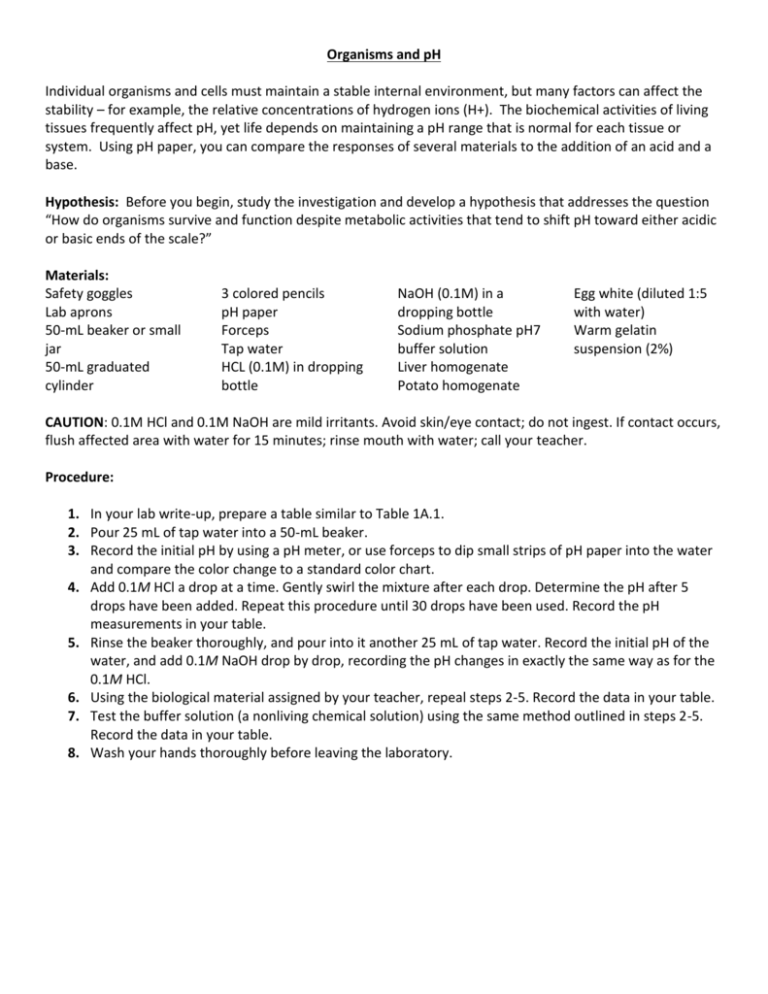
Organisms and pH Individual organisms and cells must maintain a stable internal environment, but many factors can affect the stability – for example, the relative concentrations of hydrogen ions (H+). The biochemical activities of living tissues frequently affect pH, yet life depends on maintaining a pH range that is normal for each tissue or system. Using pH paper, you can compare the responses of several materials to the addition of an acid and a base. Hypothesis: Before you begin, study the investigation and develop a hypothesis that addresses the question “How do organisms survive and function despite metabolic activities that tend to shift pH toward either acidic or basic ends of the scale?” Materials: Safety goggles Lab aprons 50-mL beaker or small jar 50-mL graduated cylinder 3 colored pencils pH paper Forceps Tap water HCL (0.1M) in dropping bottle NaOH (0.1M) in a dropping bottle Sodium phosphate pH7 buffer solution Liver homogenate Potato homogenate Egg white (diluted 1:5 with water) Warm gelatin suspension (2%) CAUTION: 0.1M HCl and 0.1M NaOH are mild irritants. Avoid skin/eye contact; do not ingest. If contact occurs, flush affected area with water for 15 minutes; rinse mouth with water; call your teacher. Procedure: 1. In your lab write-up, prepare a table similar to Table 1A.1. 2. Pour 25 mL of tap water into a 50-mL beaker. 3. Record the initial pH by using a pH meter, or use forceps to dip small strips of pH paper into the water and compare the color change to a standard color chart. 4. Add 0.1M HCl a drop at a time. Gently swirl the mixture after each drop. Determine the pH after 5 drops have been added. Repeat this procedure until 30 drops have been used. Record the pH measurements in your table. 5. Rinse the beaker thoroughly, and pour into it another 25 mL of tap water. Record the initial pH of the water, and add 0.1M NaOH drop by drop, recording the pH changes in exactly the same way as for the 0.1M HCl. 6. Using the biological material assigned by your teacher, repeal steps 2-5. Record the data in your table. 7. Test the buffer solution (a nonliving chemical solution) using the same method outlined in steps 2-5. Record the data in your table. 8. Wash your hands thoroughly before leaving the laboratory. Table 1A.1 Testing pH Solution Tested Tap Water Liver Potato Egg White Gelatin Buffer 0 5 Tests with 0.1 M HCl pH after addition of 10 15 20 25 30 drops 0 Tests with 0.1 M NaOH pH after addition of 5 10 15 20 25 30 drops Analysis: 1. Summarize the effects of HCl and NaOH on tap water. 2. What was the total pH change for the 30 drops of HCl added to the biological material? For the 30 drops of NaOH added? How do these data compare with the changes in tap water? 3. In your log book, prepare a simple graph of pH versus the number of drops of acid and base solutions added to tap water. Plot two lines- a solid line for changes with acid and a dashed line for changes with base. Using different colored solid and dashed lines, add the results for your biological material. Compare your graph to the graphs of teams who used a different biological material. What patterns do the graphs indicate for biological materials? 4. How do biological materials respond to changes in pH? 5. Use different colored solid and dashed lines to plot the reaction of the buffer solution on the same graph. How doe the buffer system respond to the HCL and NaOH? 6. Is the pH response of the buffer system more like that of water or of the biological material? 7. How does the reaction of the buffer solution serve as a model for the response of biological materials to pH changes? 8. Would buffers aid or hinder the maintenance of a relatively stable environment within a living cell in a changing external environment? 9. What does the model suggest about a mechanism for regulating pH in an organism?
